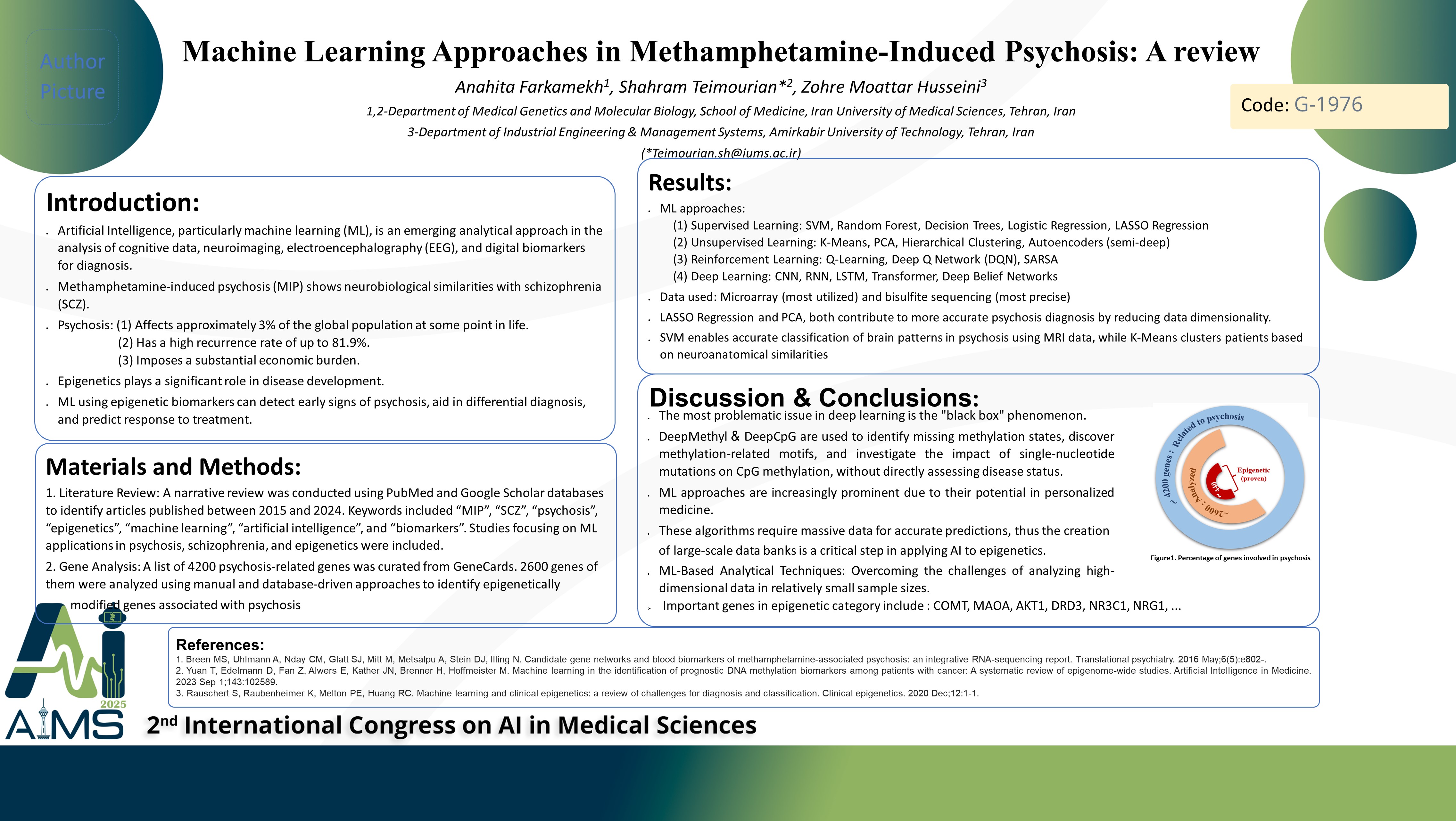Machine Learning Approaches in Methamphetamine-Induced Psychosis: A review
Code: G-1976
Authors: Anahita Farkamekh ℗, Shahram Teimourian *, Zohre Moattar Husseini
Schedule: Not Scheduled!
Tag: Biomedical Signal Processing
Download: Download Poster
Abstract:
Abstract
Background and Aims: In recent years, artificial intelligence, particularly machine learning (ML), has emerged as a novel tool in the analysis of cognitive data, neuroimaging, electroencephalography (EEG), and digital biomarkers for diagnosis. Methamphetamine-induced psychotic disorder (MIP) is a form of secondary psychosis, and its manifestations are highly analogous to schizophrenia (SCZ). It is hypothesized that MIP and SCZ may share common neurobiological underpinnings. Therefore, MIP is considered a model for identifying diagnostic, therapeutic, and prognostic approaches for SCZ. Given the impact of epigenetics in disease susceptibility, the investigation of epigenetic biomarkers can be highly advantageous. Therefore, our objective is to narratively review machine learning applications in the management of MIP as a model for SCZ, with a focus on diagnostic and prognostic tools. Method: A narrative review of the literature was conducted using databases including PubMed, Google Scholar, and the official website of the National Institute on Drug Abuse (NIDA). Articles published between 2015 and 2024 that addressed the applications of machine learning in psychosis, particularly methamphetamine-induced psychosis, were included. This review focused on diagnostic models, biomarker identification, predictive algorithms, and digital psychiatry tools enhanced by ML techniques. Result: Machine learning is capable of integrating large and complex epigenetic datasets in order to forecast future events. Among these data are microarray techniques (most utilized) and bisulfite sequencing (most precise). The most frequently employed algorithms in this field include LASSO Regression, Support Vector Machine (SVM), and Random Forest (RF). Additionally, two deep learning approaches, DeepCpG and DeepMethyl, can predict genome methylation status instead of disease status. Conclusion: Machine learning represents one of the most promising directions in psychiatric epigenetics and may substantially enhance the effectiveness of diagnosis and treatment. Although this approach is sometimes portrayed as a threat to physician autonomy, clinicians should consider its application as a complementary tool, similar to the stethoscope and MRI.
Keywords
Methamphetamine-Induced-Psychosis, Epigenetics, Artificial-Intelligence, Machine-Learning, Digital-Psychiatry, Predictive-Models
